After boosting equity market infrastructure and aligning with international standards, Middle Eastern countries have seen surging capital inflows and IPO pipelines on the back of indexation changes. Market participants tell Global Trading about the quirks of trading this fast growing market
In September, the Saudi Capital Market Authority announced that it may lift the 49% cap on foreign ownership of listed companies. The announcement sparked a rally in the market, which jumped 5% and recovered almost half of its losses year-to-date.
“If the cap is lifted and the MSCI and FTSE indices would rebalance, you could see between
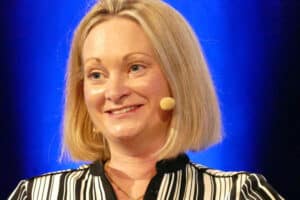
US$9 billion and US$10 billion of inflows into the region,” noted Cathy Gibson, global head of trading at Ninety One. “It’s a clear indication that Saudi is open to foreign investment, which is definitely a positive for the region.”
Foreign participation in the Saudi market has already skyrocketed over the past decade, according to UBS’s Ahmed Badr, head of global markets execution services MENA. “It used to be less than 1% of daily turnover. Today, it can go up to 30%, whether by QFI or swaps,” he says. “You’re talking about a huge difference.”
A long road
It’s been a long journey to get to this point. “North African countries, and specifically Egypt, have been open to international investors for quite some time. They were quite
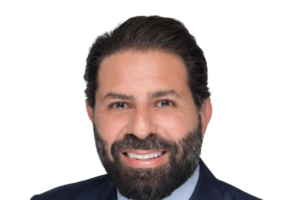
advanced early on, from the early 2000s, and interacting with international investors. The culture was geared towards trying to attract that investment. GCC countries didn’t have that. These were mainly local markets, relatively new in nature, dominated by local investors, mainly retail,” says Franklin Templeton’s head of investment and portfolio manager Salah Shamma.
In 2012, the UAE and Qatar began to push for their markets to be included in emerging markets analysis. After developing market infrastructure to fit the criteria, aligning better with best practices and establishing disclosure agreements for international investors, foreign capital began to flow in.
When a country’s stocks are added, it often boosts their appeal to foreign investors and can potentially result in significant capital inflows. Inclusion in such indices tends to enhance
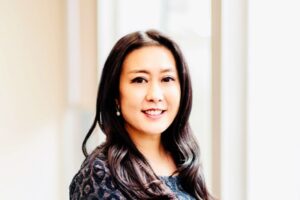
liquidity in local equity markets and provides access to international investment that was previously out of reach,” explained Belinda Mar, equities market structure and product development at Bank of America. Seeing the success, other countries in the region were inspired and followed suit, Shamma notes.
Increased activity in the region, which the Saudi market represents about 80% of, has made MENA a formidable presence in emerging markets indices. “If you wind the clocks back, before 2019 these markets were not a part of MSCI,” Badr says. “Now, MENA is more than 8%. It’s quite significant, especially with the exit of Russia. It’s on every international investor’s radar, in the basket of every investor. We’re seeing a lot of inflows from that perspective.”
“It’s a region to be reckoned with, and it’s no longer an opportunistic trade,” Shamma affirms. “As GCC markets entered emerging market indices, international investors had to adjust their allocations, resulting in a marked increase in foreign ownership and participation.”
MSCI Interactive Treemap — Loading…

Disclaimer: This visualisation is a reconstruction of the MSCI World index using available public sources, without the involvement of MSCI Inc. There may be significant differences between the data shown here and the actual index.
And the region’s importance is only going to increase, he says. “Based on our expected IPO pipeline, expected increases in foreign ownership limits and potentially further sell-downs or strategic sell-downs, that size potentially increases to 10-11% of the EM index.”
Exchanges are keen to keep momentum up. “They’ve been very active with the investment banks,” says Badr. “There are full teams in the Saudi and Dubai financial markets attending
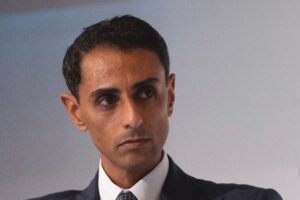
conferences, going on the road, seeing investors globally. They’re very active in promoting their exchanges to international institutional investors, and they’re really listening to how they need to develop further to attract more foreign investment.”
In Saudi, authorities have been “reasonably active” in their attempts to boost foreign investor participation, Gibson says – and have also been upping their own participation in local markets and encouraging local investments to the region.
“Retail investors play a critical role in enhancing market liquidity and diversity,” Mar says, further supporting the overall market. Gibson adds that high net worth individuals, of which there are a concentration in the region, are also highly influential. Encouraging these players to invest in the region is key to keeping the markets liquid and attracting more foreign investors.
And the foreign investors are coming; Middle Eastern markets have shifted from being overwhelmingly retail-led to having a more balanced, 50/50 retail/institutional split.
Of the ten banks with the highest equity capital markets (ECM) revenues in the Middle East for the first nine months of the year, ranked by Dealogic, just three are regionally specific. SNB Capital sits in seventh place by ECM revenues, with US$12 million and a 4% market share, while First Abu Dhabi Bank (FAB) ranked ninth with a reported US$10 million and a 3.3% share. Saudi Fransi Capital was in 10th place, with US$9 million and a 3.2% share. The three banks fell from fifth, sixth and eighth spot respectively.
At the top of the table, Morgan Stanley had the greatest share of ECM revenues in the region – 12.9%, represented by US$38 million. It was followed by Citi (US$30 million, 10.2%) and Jefferies (US$23 million, 7.8%). All three rose in the rankings year-on-year, from third, fourth and ninth.
“If we look back to when we started trading the Saudi Arabian markets here at T Rowe
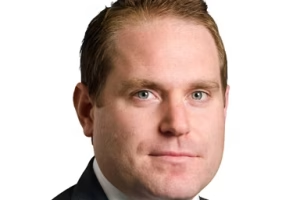
Price, we primarily found ourselves trading against local investors. This has changed however as the market has evolved rapidly over the past 10 years. There’s a broad international investor community now active in this market,” said Nick Wilkes, Head of EMEA equity trading at T Rowe Price.
“I think we’ve got a very nice balance. I don’t think it needs to be more institutionalised now,” Badr muses. “Other structural changes are more important.”
There have also been significant trading infrastructure investments across the region in recent years, including colocation facilities in Saudi and Turkey – creating fertile ground for low-latency, high-frequency trading. Jane Street announced earlier this year that it would be opening an Abu Dhabi office.
READ MORE: Jane Street breaks into MENA
“Evolving technology and brokers providing colocation have enticed quant and high-frequency trading firms to the market, changing the liquidity profile,” says Wilkes. “It’s modernising, and we have to adapt to that.”
ID, please
The majority of Middle Eastern countries run ID markets, which require foreign investors to identify themselves at each stage of a transaction. In the UAE, Kuwait and Qatar this is known as a National Investor Number (NIN), and in Saudi Arabia as a Custody Portfolio Account (CPA). IDs are not required in Turkey or Israel.
Opinions on this structure are mixed. Earlier this year, Invesco senior equity dealer Adrian Bradshaw told audiences at TradeTech that ID markets are labour intensive and prevent firms from using some algos when trading.
“If we have multiple funds on an order, we can’t use an algorithm – you have to set up five separate orders,” he explained.
That’s not the only thing limiting algo use. “Ultimately, these are single-exchange markets and so your tools aren’t necessarily going to work the same way as they do in other markets,” Wilkes said. “We talk about low-touch algorithms, they’re great for fragmentation, especially in liquidity seeking modes, but there aren’t necessarily secret liquidity pools out there at this stage in these markets. As they evolve, that could change.”
UBS’s Badr agrees that the ID market is a challenge. “Every portfolio, every fund, has to have an ID, and you allocate for them in the beginning,” he said. “There’s no omnibus structure in these markets, no post-trade allocation. Obviously, people want to send one line and then allocate everything post-trade.”
However, he acknowledges that exchanges in the region are listening to market participants’ calls for change: “They understand the needs of the market and the necessity of development.”
Others are less concerned about the impact that an ID market has on international investor appetite.
“I don’t think it’s hindered them from coming into the market,” says Shamma. “It’s not unique to the region. Other markets in the EM space require the same thing.”
“We can still block trade,” Gibson adds; it just requires a little more work for allocations to be made on an individual account level.
Primary
In the primary markets, the Middle East was flourishing in 2024 – with the region’s bourses outpacing European listings.
READ MORE: India, Middle East are new IPO hotspots as Europe and China flag
Yet in 2025, Saudi – which led the 2024 charge with US$3.8 billion of initial public offerings issued in SAR – faltered. The Middle East as a region issued US$4.6 billion between January and August, up 9% year-on-year (YoY). While this is a slight increase, it pales in comparison to other emerging markets; India’s IPO issuance was up 67% to US$9.63 billion.
READ MORE: US IPOs enjoyed summer surge, prompting heavy trading
On the decline, “I think it’s just a function of global markets,” Badr says. “As these markets become more global, and have more global players, they will be more affected by world events.”
He adds that some valuations last year might have been a bit rich, with the IPOs not performing as well as expected. “It’s normal that issuers will take a step back, wait a bit. There’s been a slowdown, but the pipeline keeps growing. Now it’s a question of when they’ll come to the market.”
As markets become more globally connected, it’s inevitable that they will become more standardised. A case in point: Gibson suggests that the growing popularity of 24/7 trading (or close to it) in the US may mean that Saudi’s Sunday-Thursday opening hours may be less of an oddity going forward.
For now, though, traders need to be attuned to market idiosyncrasies and know how to adapt to them.
“You have to put the effort in,” says Wilkes. “If you had a uniformed process, global markets would get very boring. What makes EM exciting is the cultural differences and the nuances, understanding that and working out how to use them to your advantage.”

